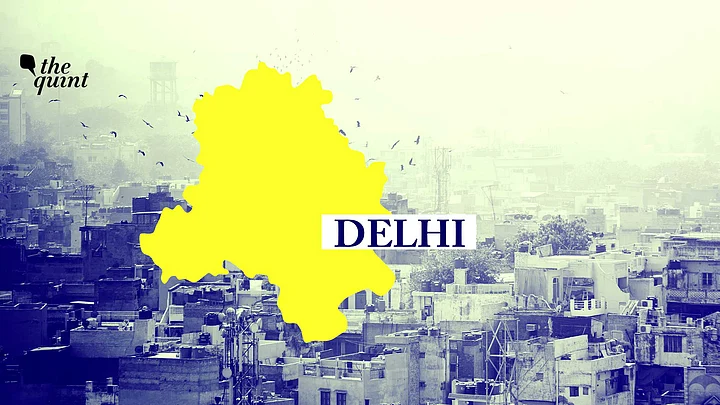Five days since Delhi chief Minister Arvind Kejriwal announced unlock guidelines, photos of crowded markets and malls have emerged, bringing back fears that perhaps Delhi may have opened too much, too soon.
Delhi reported 165 new cases and 14 deaths on Friday with a positivity rate of 0.22 percent.
On June 6, Delhi announced opening of markets and shopping malls with an odd-even system between 10 am and 8 pm. Delhi metro, private offices were also started at 50 percent capacity. Dine-in restaurants were allowed to open with 50 percent capacity. Gyms and salons would remain shut and so would public parks.
Giving the harrowing time the city had just a month ago, during the ferocious second wave, some experts are of the view that the decision was ‘unscientific.’
‘Slow and Steady is the Way to Go’
“Now the corona situation is under control. The economy must be brought back on track,” Delhi CM Kejriwal had said on Saturday.
“Since the numbers are so low, there is no doubt there was a need to open up. The only approach is how best do we do it," says health systems expert Dr Chandrakant Lahariya. He adds, "In some senses, it’s a repetition of what we saw in June 2020, and later with subsequent waves in Delhi, what happens is Governments open up and then forget what needs to be done. That needs to be different this time.”
“The lockdown must be eased in phases,” says Dr AS Soin, liver transplant surgeon with Medanta Hospital, “We should open up outdoor activities in public places first, and then cautiously we must open up indoor establishments.”
Given that the virus is largely airborne, and our understanding of the nature of the virus has improved exponentially between waves, we should have used a more scientific approach, say experts.
"The attention should have been on opening up open spaces like parks, and that has not happened. What has been opened up are places where transmission is high. Indoor spaces should be given more time to set up proper ventilation with set guidelines, and that has not been done,"Dr Chandrakant Lahariya, Public Systems Expert
“We should begin with only 4-6 people being allowed to gather, that too from the same household, and then go up based on data over the next few weeks,” adds Dr Soin.
It’s much more important to adopt Covid-appropriate behaviours than get stuck with rules like odd and even with 50 percent capacity.
Dr Soin is also of the view that officials should carry out periodic checks in establishments and give our strict fines and penalties to those who don’t abide.
Don't Depend Upon Herd Immunity
An AIIMS-WHO study, released on Thursday, indicated that come resettlement colonies in urban areas of South Delhi had a seroprevalence of nearly 74.7 percent among children.
In an earlier interview with FIT, Dr K Srinath Reddy, president, Public Health Foundation of India, had questioned the famed concept of herd-immunity, saying the term is often misused and we should not hide behind the terminology to lower our guard, especially as the threat of new variants remains high.
Given that Delhi had high sero prevalence even before the fourth wave, the city was still badly hit, with a study by INSACOG (Indian SARS-CoV-2 Genome Sequencing Consortia) now saying it was the 50 percent more infectious Delta variant that was to blame.
Speaking with The Quint, Dr Reddy warns of the folly of opening up too soon, "We should not suddenly swing from guarded lockdown to gay abandon of indoor crowding in malls and restaurants. Commercial activity does provide tax revenues to governments, which they wish to use for advancing development initiatives that will win them popular support,"
"However, hasty measures that give the virus a free passage will lead to morale shattering shutdowns again."Dr K Srinath Reddy
Public Health Communication is Key
Metros have been open for two weeks now, the approach should have been to observe how people react to new restrictions and adoption of Covid-appropriate behaviour, says Dr Lahariya
"If you are removing restrictions, increase public health communication with more scientific and personalised approach," he says.
Dr Reddy adds, "Phased release is more prudent. That approach also sends a signal to people that danger still lurks and cautious behaviours should not be cast away."
After Unlock: Don't Abandon the Science
Testing, Testing, Testing: Delhi has been consistently testing around 70 thousand people on a daily basis. Delhi has also consistently stuck to a much higher RT-PCR to Rapid Antigen Test ratio. Experts insist this number should not go down even when infections are on a downward turn.
Sequencing the Samples: Experts also insist that the 5% of all samples must be sent for genome sequencing to keep an eye on possible new variants and changes in the behaviour of existing ones. 5% of samples for sequencing is recognised by the WHO as adequate, but India has performed poorly in this metric.
Track the Data: Test positivity rate and any changes in it must be tracked on a weekly basis and policies made on the basis of data. Conduct regular studies and based on the data increase or decrease restrictions
Govern, Penalise, Support: Monitoring of Covid-appropriate behaviour is essential. Markets, malls, offices that do not conform invite penalties.
Localise Public Health Communication: Improved communication strategy on Covid-appropriate behaviours. Involve local resident welfare associations, community in communication.
